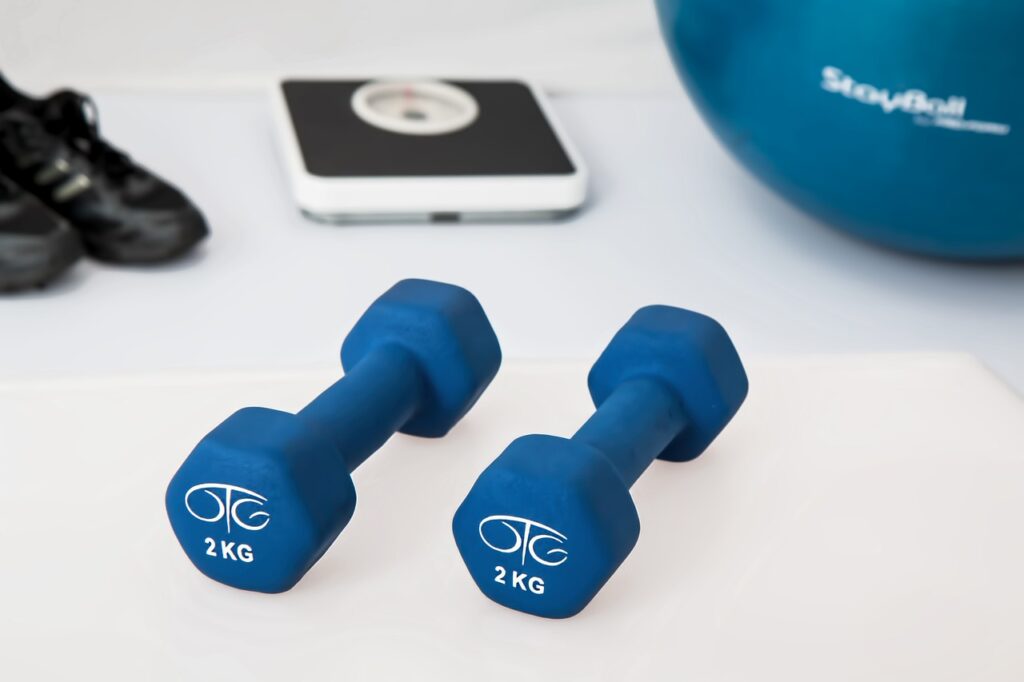
Have you ever wondered about the role of periodization in strength training? In the world of fitness, periodization is a crucial concept that involves planning and organizing your exercise routine in specific phases to optimize your strength gains. This approach helps you avoid plateaus, prevent overtraining, and keep your workouts interesting and effective. Whether you are a seasoned athlete or just starting your fitness journey, understanding the role of periodization can take your strength training to the next level.
Understanding Periodization
What is periodization?
Periodization is a strategic approach to training that involves dividing a training program into specific phases or cycles, with each phase focusing on different training variables such as volume, intensity, and exercise selection. The main goal of periodization is to optimize performance and promote long-term progress while minimizing the risk of overtraining and injuries.
The history of periodization in strength training
The concept of periodization dates back to ancient Greece, where athletes were known to use systematic training cycles to prepare for various sporting events. However, the modern concept of periodization in strength training can be attributed to the work of Dr. Leo Matveyev, a Soviet sports scientist, who first introduced the concept in the 1960s.
Dr. Matveyev’s research showed that systematically varying training variables over time can lead to better performance gains and reduce the risk of overtraining. His work greatly influenced the development of periodization models that are widely used in strength training today.
The principles of periodization
Periodization is built upon several key principles that guide the design and implementation of training programs. These principles include progressive overload, specificity, variation, and adaptation.
Progressive overload refers to the gradual increase in training intensity, volume, or both over time to continually challenge the body and stimulate progress. Specificity emphasizes the need to tailor training to the specific goals of the individual, ensuring that exercises and training methods align with their desired outcomes.
Variation is an essential component of periodization, as it involves modifying training variables such as exercise selection, intensity, and volume to prevent plateaus and promote adaptation. Lastly, adaptation is the body’s response to the stimuli provided by the training program, and it is through adaptation that progress is made.
Benefits of Periodization in Strength Training
Optimizing performance and gains
Periodization allows for the systematic manipulation of training variables to optimize performance and maximize gains. By strategically increasing intensity and volume, the body is continually challenged, leading to improvements in strength, power, and endurance. This structured approach to training helps athletes break through plateaus and reach new levels of performance.
Minimizing overtraining and injuries
One of the significant benefits of periodization is its ability to minimize the risk of overtraining and injuries. By incorporating planned recovery phases, athletes can give their bodies the rest they need to recover, repair, and adapt to the training stimuli. Periodization also allows for progression in a controlled manner, preventing excessive strain on the muscles, tendons, and joints that could lead to injuries.
Promoting long-term progress
Periodization is designed to promote long-term progress by avoiding stagnation and continuous improvement. By implementing different phases or cycles with varying training variables, athletes can adapt to different physiological demands and continually challenge themselves. This approach helps maintain motivation, prevent burnout, and create a sustainable training routine.
Different Phases of Periodization
Macrocycle
The macrocycle is the highest level of the periodization hierarchy, typically lasting a year or more. It is used to outline the long-term goals and plan for the entire training program. During the macrocycle, athletes may focus on several mesocycles with specific objectives that build upon one another.
Mesocycle
A mesocycle represents a medium-term phase within the macrocycle, typically lasting several weeks to a few months. Each mesocycle has a specific focus, such as hypertrophy, strength, or power, depending on the athlete’s goals. Mesocycles are often divided into further smaller cycles called microcycles.
Microcycle
The microcycle is the shortest phase within periodization, typically spanning one week. It involves specific training routines and focuses on managing training variables such as volume, intensity, and exercise selection on a weekly basis. Microcycles allow for more precise adjustments and monitoring of progress throughout the training program.
Periodization Models
Linear periodization
Linear periodization is the most traditional and commonly used model in strength training. It involves gradually increasing training intensity and reducing volume over time. The focus is on developing a solid strength base before progressing to more intense phases. Linear periodization provides a clear progression and is suitable for beginners and intermediate athletes.
Undulating periodization
Undulating periodization, also known as nonlinear periodization, involves frequent changes in training variables within shorter time frames. This model allows for more flexibility and variation in training intensity and volume. Undulating periodization is often used by advanced athletes and helps prevent plateaus by continuously challenging the body with different training patterns.
Block periodization
Block periodization is a model that focuses on specific training blocks, each with a distinct goal. Instead of gradually increasing intensity over time, block periodization involves concentrated training phases followed by active recovery periods. This model allows athletes to emphasize specific qualities, such as strength or power, within each block. Block periodization is often used by advanced athletes preparing for specific competitions.
Designing a Periodization Program
Setting specific goals
The first step in designing a periodization program is setting specific goals. Whether the goal is to increase strength, build muscle, or improve athletic performance, it is essential to define the desired outcome. Specific goals provide direction and allow for the customization of training variables to meet individual needs.
Determining training volume and intensity
Once the goals have been established, the next step is to determine the appropriate training volume and intensity. Training volume refers to the total amount of work performed during a training session or week, while intensity refers to the level of effort exerted during training. Balancing volume and intensity is crucial to prevent overtraining while still promoting progress.
Choosing exercises and variations
The selection of exercises and variations is another critical aspect of designing a periodization program. Exercises should align with the goals and target specific muscle groups or movement patterns. Variations such as using different equipment, adjusting body positions, or altering the range of motion can provide additional stimulus and prevent adaptation.
Applying Periodization to Different Types of Strength Training
Periodization for powerlifting
Periodization plays a crucial role in powerlifting by helping athletes reach peak performance during competitions. Powerlifting periodization often includes phases dedicated to hypertrophy, strength development, and peaking for competition. Emphasizing specific training variables for each phase allows powerlifters to optimize their performance on the competition day.
Periodization for bodybuilding
In bodybuilding, the goal is to maximize muscle growth and create a balanced physique. Periodization in bodybuilding typically includes phases focused on hypertrophy, strength, and cutting. By manipulating training variables throughout these phases, bodybuilders can achieve the desired muscle development while minimizing the risk of muscle imbalances and overtraining.
Periodization for athletes
Athletes from various sports can benefit from periodization to improve their performance. Depending on their sport-specific demands and goals, athletes may incorporate phases focused on strength, power, speed, agility, or endurance training. Periodization allows athletes to enhance specific qualities required for their sport while maintaining overall athleticism.

Common Periodization Mistakes
Neglecting to plan recovery phases
One common mistake in periodization is neglecting to plan recovery phases. Rest and recovery are essential for the body to adapt and progress. Failing to incorporate periods of reduced training intensity or complete rest can lead to overtraining, fatigue, and increased risk of injuries. Including regular recovery phases in a periodization program helps optimize performance and prevent burnout.
Neglecting individual differences and needs
Another mistake is neglecting individual differences and needs. Each person has unique strengths, weaknesses, and training histories, which should be considered when designing a periodization program. It is crucial to tailor the program to the individual’s capabilities, goals, and preferences to ensure optimal results.
Failing to monitor and adjust the program
Failing to monitor progress and make necessary adjustments is a common pitfall in periodization. Regular assessment of performance, strength gains, and overall well-being is essential to gauge the effectiveness of the training program. Adjustments can then be made to training variables or the overall structure of the periodization program to address individual needs and continue making progress.
Periodization and Adaptation
How the body adapts to progressive overload
The body adapts to progressive overload through a process called supercompensation. When training, the body experiences stress that disrupts its homeostasis. In response to this stress, the body repairs and rebuilds the damaged tissues to become stronger and more resilient. Through progressive overload, where training stimuli are gradually increased, the body adapts to a higher level of stress, resulting in improved strength, muscle growth, and performance.
The importance of varying training stimuli
Varying training stimuli is essential to continue making progress and prevent plateaus. The body has a remarkable ability to adapt and become more efficient in response to repetitive stimuli. By incorporating different exercises, intensities, volumes, and training methods, periodization provides a constant challenge to the body, forcing it to continually adapt and improve.

Individualizing Periodization Programs
Considering individual training history and experience
When designing a periodization program, it is essential to consider an individual’s training history and experience. Beginners may require more gradual progression and a focus on mastering fundamental movements before advancing. On the other hand, advanced athletes may need more complex and challenging training stimuli to continue making progress. Tailoring the program to an individual’s abilities and experience level helps optimize results and minimize the risk of injury.
Modifying periodization for different age groups
Periodization can be modified to accommodate different age groups and their specific needs. For younger athletes, the focus may be on skill development, coordination, and long-term athletic development. As athletes get older, periodization can incorporate more strength and power training to counteract the natural decline in muscle mass and performance that occurs with aging. Modifying periodization for different age groups ensures that training is effective and safe for individuals at any stage of their athletic journey.
Periodization and Nutrition
The role of nutrition in supporting periodized training
Nutrition plays a vital role in supporting periodized training. To optimize performance and recovery, athletes need to fuel their bodies with the right nutrients at the right times. Adequate carbohydrate intake is crucial to provide energy for high-intensity training, while protein is essential for muscle repair and growth. Proper timing of meals and snacks, as well as sufficient hydration, are also key factors in supporting the demands of periodized training.
Adjusting macronutrient ratios during different phases
As training variables change throughout the different phases of periodization, so should macronutrient ratios. During phases focused on hypertrophy and strength, athletes may benefit from a higher protein intake to support muscle growth and repair. When transitioning to a cutting phase, a moderate reduction in overall calorie intake, particularly from carbohydrates, may be appropriate to support fat loss while preserving muscle mass. Adjusting macronutrient ratios to match the specific goals and demands of each phase helps optimize results and support the training process.
In conclusion, periodization is a crucial aspect of strength training that allows athletes to optimize performance, minimize the risk of overtraining and injuries, and promote long-term progress. Understanding the principles, different phases, and models of periodization, as well as designing individualized programs, can help athletes of all levels reach their goals effectively and efficiently. Combined with proper nutrition and a focus on adaptation, periodization can unlock the full potential of strength training and lead to significant improvements in strength, power, and overall athletic performance.


